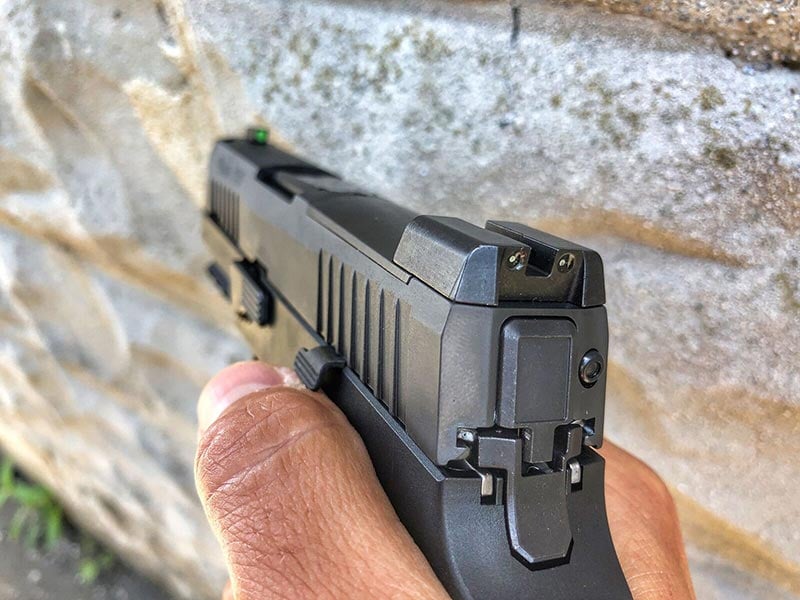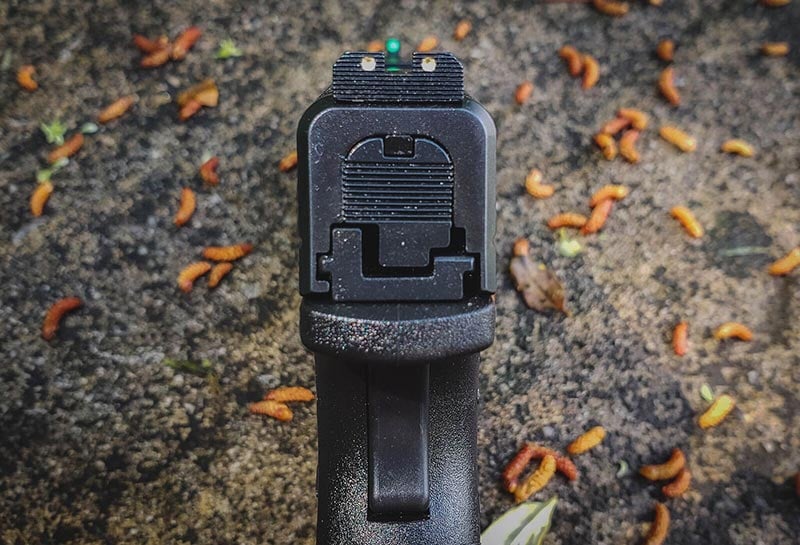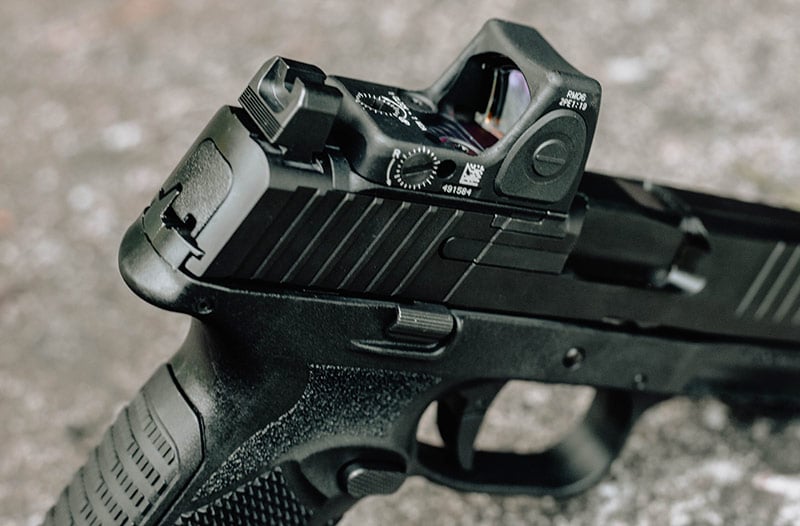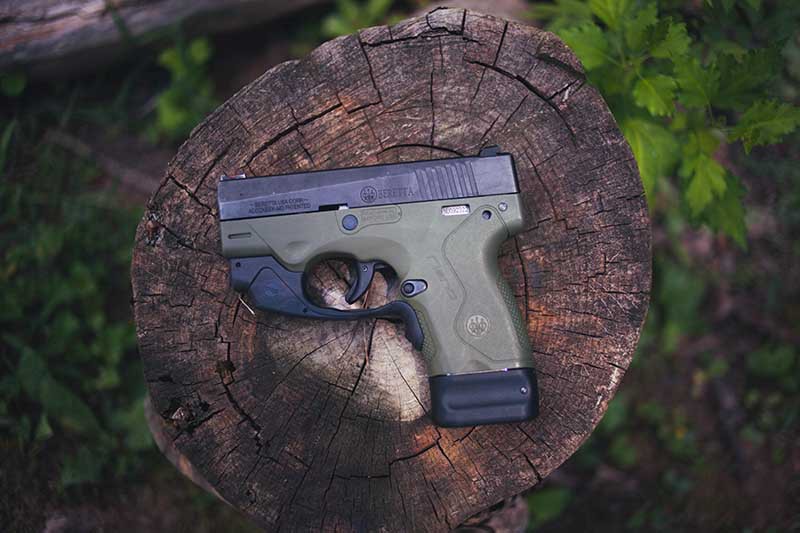
Iron sights mounted on the Sig Sauer P320 X. (Photo: Ben Brown/Guns.com)
CHECK OUT GUNS.COM’S INVENTORY OF OPTICS HERE
Though standard iron sights haven’t changed much over the last several hundred years, technological advances in optics have pushed the envelope for handguns. With an array of options from glow-in-the-dark to electronic, Guns.com is here to break down the various handgun optic styles so you can make the best decision for your shooting style.
IRON SIGHTS

Fiber Optic sights on the Springfield XD-S. (Photo: Jacki Billings/Guns.com)
What many consider “old faithful,” iron sights are a staple on most handguns. While they come in a variety of styles – traditional 3-dot and u-style, for example – there have been some innovations since their inception.
The first major development began with the tritium sight. Allowing shooters to visualize the sights in low light, tritium made engaging targets in dim scenarios easier. In the late 1990s and into the 2000s, tritium was the go-to style for law enforcement and concealed carriers.
The next evolution came by way of fiber optic. Fiber optic sights glow bright — even in normal light. They come in numerous colors and can be installed on narrower sights since they are not radioactive. Today, fiber optic sights dominate the world of upland hunting and competitive shooting.
Iron sight proficiency should be the first step in optics. Long before you toss on a targeting aid or red dot, every gun owner should master the art of shooting with iron sights.
MINIATURE RED DOT

The Trijicon RMR on the FN 509 Midsize MRD. (Photo: Jacki Billings/Guns.com)
Used in competition shooting for many years, red dot sights have decreased in size over the years allowing more gun owners to concealed carry with these optics. Red dots like the Trijicon RMR and Burris Fastfire make target acquisition faster, affording accurate shots at much further distances.
Red dots also offer an advantage at night, making low light shooting easier. Several red dots on the market even feature light sensors that automatically adjust to the optimal brightness.
The downside to a red dot is two-fold. The first is that most standard holsters don’t accommodate them meaning gun owners will need to opt for a customized rig or one specific to red dot carry.
The second pitfall of the design is that most red dots are battery-driven, meaning gun owners have to remember to change them regularly. Generally speaking, most batteries last two years. A good rule of thumb is to change out batteries on your birthday or anniversary each year, so you know they won’t fail you.
For those opposed to battery-powered red dots, there is an alternative – a Dual Illuminated RMR from Trijicon. Using fiber optics and tritium, the Dual Illuminated RMR collects ambient light to automatically adjust the reticle’s brightness. In no/low light, the tritium does the heavy lifting, illuminating the reticle. Keep in mind that this construction tends is a dimmer solution and more difficult to see when drawing.
Honorable Mention: Laser Accessories

The Beretta BU9 outfitted with a Crimson Trace laser. (Photo: Jacki Billings/Guns.com)
Though not an optic in the true sense of the word, lasers do deserve some attention as an aiming aid for novice shooters. These tools help shooters produce the gun on target and improve aiming in life-threatening, high-stress situations. It also acts as a heck of a deterrent against predators. Nothing says, “No thanks” like a red or green dot.
Undermounted lasers, like the LaserLyte Sight Center Mass, slide onto the accessory rail of full-size and most compact pistols. Typically, these are integrated with a flashlight like the Streamlight TLR series.
For subcompact pistols without an accessory rail, grip lasers and trigger guard lasers mount to other areas of the gun. Grip lasers, in particular, offer laser activation with a natural grip of the firearm. Made famous by Crimson Trace, these are said to have a dedicated run time of two hours and are a decent option for those running a full-sized 1911.
Final Thoughts
Whether you adopt fancy new iron sights, a laser aiming accessory or red dot on your pistol, the most important advice to follow is to train. Each device comes with its own limitations and adjustments, so it’s wise to take some time to familiarize yourself with each platform.
Ready to pick up your next pistol optic? Check out Guns.com’s bevy of handgun optic options now!
The post What Are My Options For Handgun Optics? appeared first on Guns.com.
